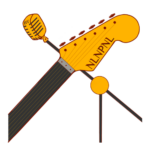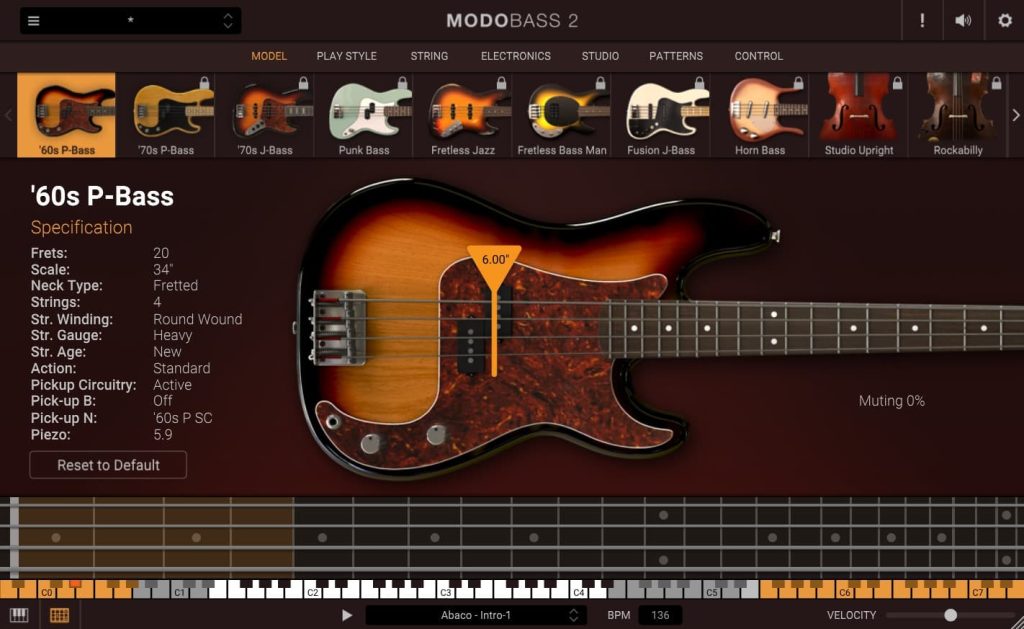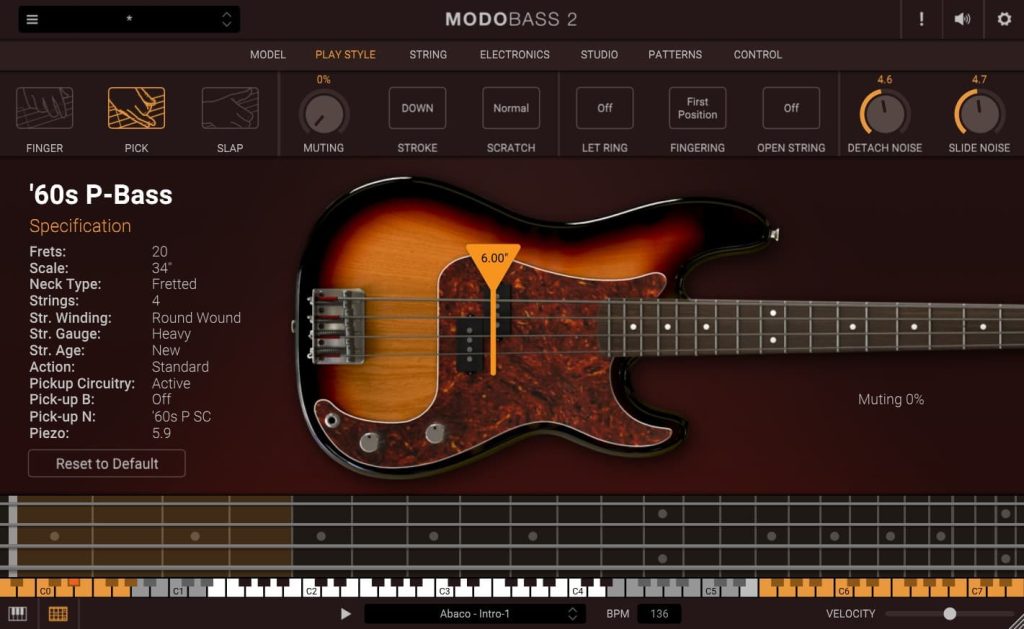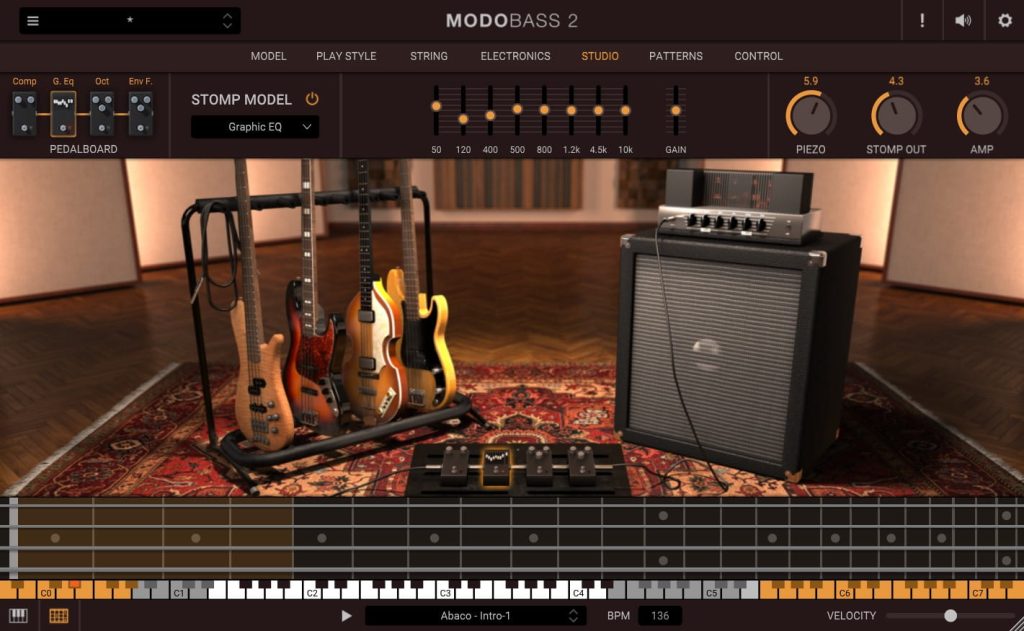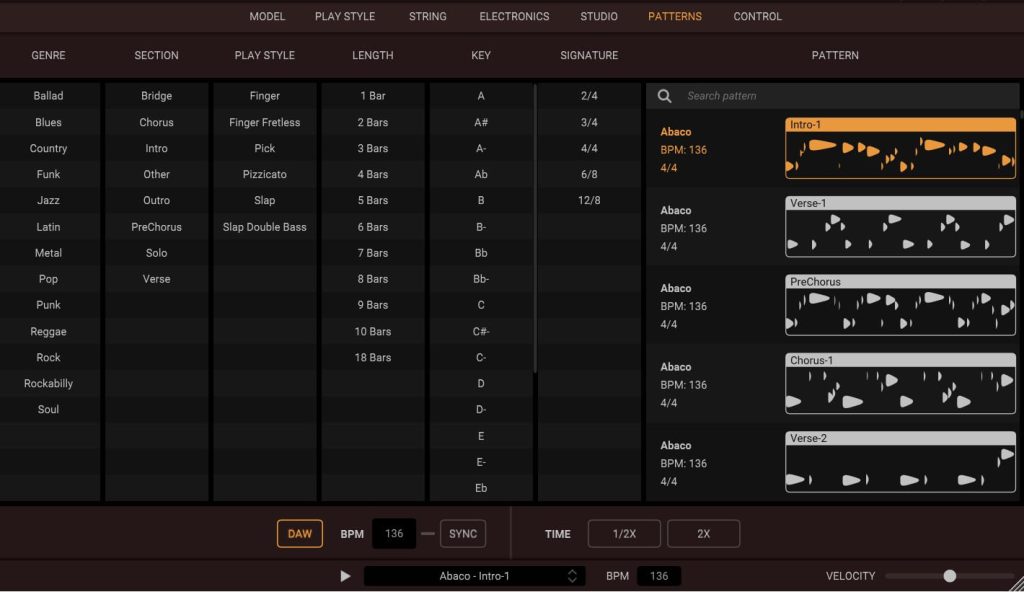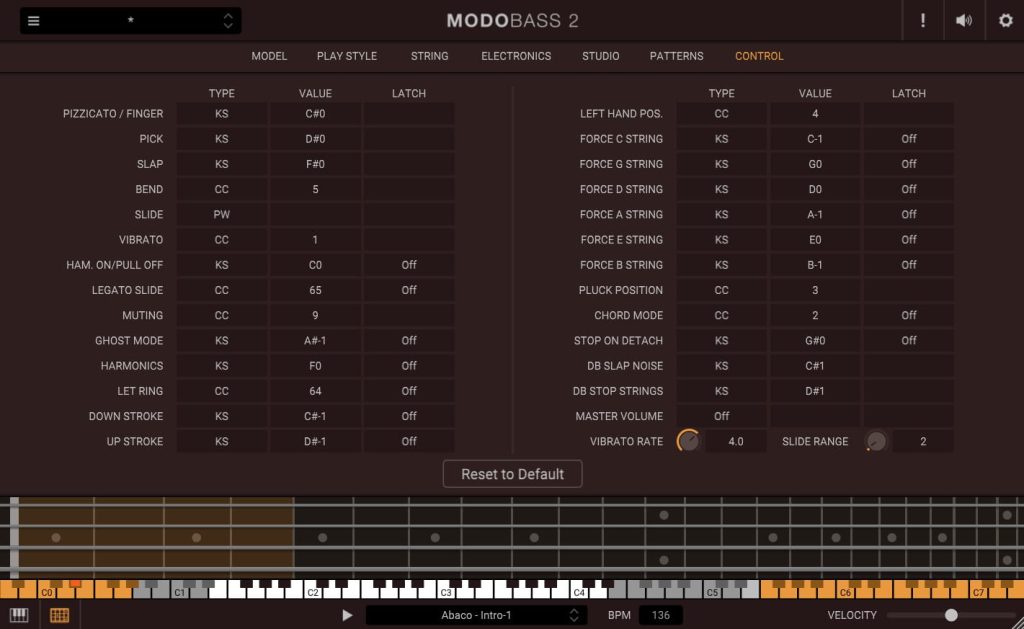IK multimedia's MODO Bass 2, Virtual Bass Plugin
Maybe you don't play bass, or don't have a bass, and you want bass tracks on your recording. And you don't have a big budget. What do you do?
MODO Bass 2 from IK Multimedia Is One Possible Answer
MODO Bass 2 is a virtual instrument -- that is it's software designed to emulate a bass guitar. While many of us would like to have a bass player at hand, it's not always practical.
MODO Bass 2 has one free bass model you can use on your recordings, and many more models available as paid upgrades.
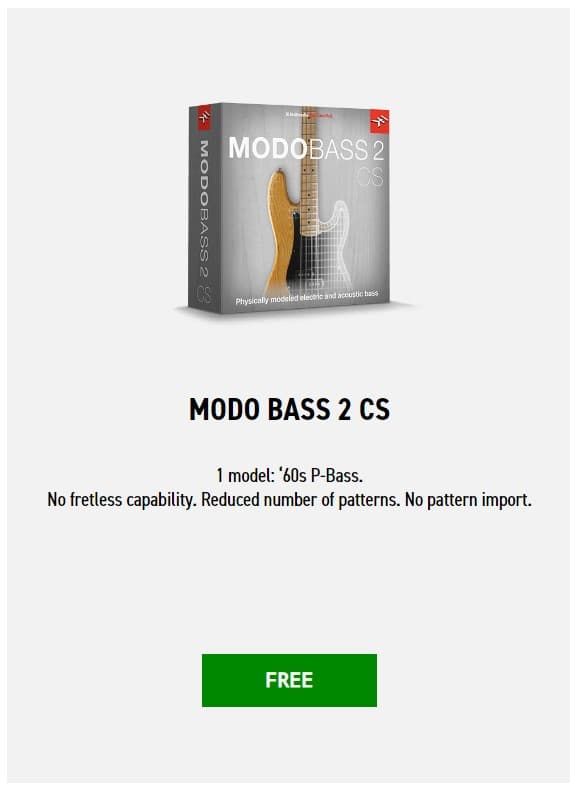
The '60s P-Bass Is Free
Many other models, including fretless and upright basses are available for a paid upgrade. MODO Bass 2 has 7 tabs across the top.
MODO Bass 2 Parameters & Controls
Models
We've already had a look at the Models tab (above), which lets you choose which model to use.
Play Style
In the Play Style tab, you can choose Finger, Pick, or Slap. Each style has options. For instance, when choosing 'Pick' you can use all downstrokes, alternate picking, or just upstrokes.
The Muting control allows you to get a softer, palm-muted sound. You can set the percentage with the knob.
There are also options to let notes ring, use open strings or not, and to choose whether you use the first position when possible, use the easiest fingering, or the nearest possible fingering choice.
String
The String tab lets you choose round wound or flat wound strings, their gauge, and whether the strings are new or not.
Also available are 4, 5, or 6 strings, as well as drop tuning and fretless (for fretless models). The free bass model is fretted -- you have to upgrade for the fretless models.
Electronics
The electronics tab lets you choose between available pickups. There's a Piezo volume. According to the manual, "PIEZO: sets the volume of the piezo. The piezo pickup (normally placed under the bridge) can be mixed with the standard pickups allowing for a much more customizable sound.
You can select Active or Passive with the Circuit button. Passive has a tone control whereas Active gives access to the Bass, Middle and Treble controls.
Studio
The Studio tab gives us access to an amp and some stomp boxes. The stomp boxes include a Compressor, Graphic EQ, Octaver, and Envelope Filter.
You can switch between amp models, use the tone controls in the amps, and control the level of the stomp section output and the amp output.
Patterns
MODO 2 Bass has some built-in MIDI patterns you can drag and drop into your songs.
Control
The Control section displays MIDI controls and settings that allow you to control MODO BASS 2 with a MIDI controller or with automation from your DAW.
Own, Or Wish To Own Any IK Multimedia Hardware?
MODO BASS 2 SE is available for free, if you own certain IK Multimedia hardware. The SE edition has 4 models: ‘60s P-Bass, ‘70s P-Bass, ‘70s J-Bass, Punk Bass.
MODO 2 Virtual Bass -- Downloading And Installing
IK Multimedia manages its software installation through their IK Product Manager software. You download that and download Bass MODO 2 via that application.
MODO Bass 2 Conclusion
The free '60s P-Bass alone, is very impressive. It's very flexible and natural sounding virtual bass. I've been using Prominy SR5 Rock Bass for several years. It uses Kontakt to load samples, and I prefer IK's plugin that loads its own samples. I'm happy with Rock Bass.
The full version of MODO and the new version of Rock Bass (SR5 Rock Bass 2) are both $149 as I write this. Frankly, I'm not sure which I'd choose if I had to make the call today. But Rock Bass is one bass model (MusicMan Stingray5) and MODO Bass 2 has 22 models.
And MODO Bass 2 has the free model available. It's a big advantage.
I wouldn't have any qualms about using MODO Bass 2 on a recording. Check it out!
Resources
IK Multimedia MODO Bass 2 virtual bass software
Prominy SR5 Rock Bass 2, virtual bass.
